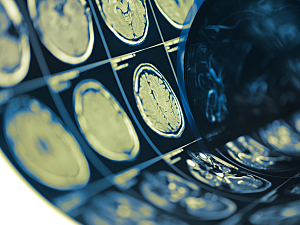Functional neuroimaging has identified various brain regions whose activity seems to correlate with spiritual or religious behaviors. However, such studies can’t determine whether those parts of the brain are causally involved in the behaviors.
By using a newer technique called lesion network mapping, Michael Ferguson, PhD, a neuroscientist at the Center for Brain Circuit Therapeutics at Brigham and Women’s Hospital, Michael D. Fox, MD, PhD, principal investigator and director of the Center for Brain Circuit Therapeutics, and colleagues have identified a specific brain circuit that seems to be a neural substrate for spirituality and religiosity. Their findings appear in Biological Psychiatry.
Lesion Network Mapping of Spiritual Acceptance
The researchers used data from a study by another group, published in Neuron, in which 88 patients completed the Temperament and Character Inventory (TCI) before and after brain tumor resection. The spiritual acceptance subscale of the TCI self-transcendence domain is a validated measure of spirituality and religiosity.
On that subscale, 30 patients reported a decrease in spiritual belief, 29 reported an increase and 29 reported no change. Their lesions had occurred in various places throughout the brain.
Brain lesions in patients with changes in belief were mapped to a circuit centered on the periaqueductal gray (PAG), a brainstem region that’s been implicated in fear conditioning, pain modulation, altruistic behaviors and unconditional love. Furthermore, it’s enriched in receptors implicated in pain regulation (e.g., mu-opioid receptors) and pair bonding (e.g., oxytocin).
Lesion locations associated with decreased spirituality intersected positive nodes in the spirituality circuit, while lesion locations associated with increased spirituality intersected negative nodes.
Validation
The findings were validated in an independent population of 105 individuals who sustained penetrating head trauma during the Vietnam War. As part of a previous study, several decades after the injury, they were asked, “Do you consider yourself to be a religious person?” That study also involved pinpointing brain lesion locations.
In the current analysis, functional connectivity between those lesion locations and the PAG was significantly associated with whether subjects self-identified as nonreligious or religious.
Relationship to Hyper-religiosity
For decades, hyper-religiosity has been noted after focal brain lesions and in patients with temporal lobe epilepsy. Via a systematic literature search, the researchers identified four case reports of patients with lesion-induced hyper-religiosity in which it was possible to hand-trace the published lesion image onto the brain template used in this study.
Lesion locations in these case reports aligned well with the newly identified spirituality circuit. Atrophied locations associated with hyper-religiosity intersected positive nodes, while lesions associated with hyper-religiosity intersected negative nodes.
Relationship to Lesions Associated with Neurologic/Psychiatric Symptoms
At the time this research was being completed, the Center for Brain Circuit Therapeutics had published lesion network mapping studies for 12 neurologic and psychiatric symptoms: akinetic mutism, alien limb, amnesia, asterixis, criminality, delusions, expressive aphasia, freezing of gait, hallucinations, hemichorea, pain and parkinsonism.
The team investigated whether any of these symptoms shared neuroanatomy with spirituality and found three of them did:
- Lesions causing delusions or alien limb syndrome, both of which can be associated with feelings of control by an external agent, intersected negative regions of the circuit (locations associated with increased spirituality and religiosity)
- Lesions causing parkinsonism intersected positive regions of the circuit (locations inversely associated with spirituality)
Caveats
The finding of a shared neural substrate between two phenomena should not be overinterpreted. For example, these study results don’t imply religion is a delusion or that Parkinson’s disease arises due to a lack of religious faith.
The study participants came from predominantly Christian cultures, which may limit generalizability to other cultures and religious traditions. The single yes/no question asked of the validation population doesn’t capture the wide variety of religious beliefs, behaviors or contributing factors. Moreover, most of those participants were older white men, and the findings may not generalize to other races, ages or genders.
Finally, spirituality and religiosity were studied here as single behaviors. Other aspects of spirituality and religiosity may map to different brain circuits, which is one of several important topics for future work.
